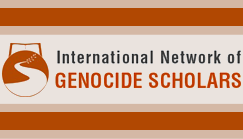Submission Type
Roundtable
Abstract
The political violence in Guatemala (1960-1996) resulted in 200.000 victims, the majority of whom belong to the indigenous populations of the altiplano (highlands). The ruling military indeed implemented a scorched earth policy that resulted in the massacre of entire villages or communities on suspicion of “subversion” and supporting the Marxist guerrilla. In the 1990s, the peace process piloted by the UN launched a long sequence of exhumations and reburials of the victims. The lack of interest of the State authorities in the process allows for some heterogeneity in the reburial practices, which are locally negotiated between various stakeholders: victims’ relatives, religious authorities and experts conducting the exhumations (hired forensic specialists, NGOs, ICRC representatives). In the transitional justice model promoted by international norms, the restitution of the victim’s remains to their families has been articulated as a key element to enable the grieving process, emphasising on individual victim’s identification. However, the poor condition in which the remains are found, or the absence of any direct relatives, often make identification impossible, despite the potential use of DNA tests. Some communities thus choose to collectively re-inhume all the dead (identified and non-identified), emphasizing local belonging over kinship. The moment of re-inhumation therefore questions the different levels of belonging of the dead, and their re-integration in the community.

Sense of belonging and Ixil post-genocide identities in Guatemalan collective reburials
The political violence in Guatemala (1960-1996) resulted in 200.000 victims, the majority of whom belong to the indigenous populations of the altiplano (highlands). The ruling military indeed implemented a scorched earth policy that resulted in the massacre of entire villages or communities on suspicion of “subversion” and supporting the Marxist guerrilla. In the 1990s, the peace process piloted by the UN launched a long sequence of exhumations and reburials of the victims. The lack of interest of the State authorities in the process allows for some heterogeneity in the reburial practices, which are locally negotiated between various stakeholders: victims’ relatives, religious authorities and experts conducting the exhumations (hired forensic specialists, NGOs, ICRC representatives). In the transitional justice model promoted by international norms, the restitution of the victim’s remains to their families has been articulated as a key element to enable the grieving process, emphasising on individual victim’s identification. However, the poor condition in which the remains are found, or the absence of any direct relatives, often make identification impossible, despite the potential use of DNA tests. Some communities thus choose to collectively re-inhume all the dead (identified and non-identified), emphasizing local belonging over kinship. The moment of re-inhumation therefore questions the different levels of belonging of the dead, and their re-integration in the community.





Comments
View the agenda item.
Link to bio.